PMP Study Notes
 This post is a collection of PMP study notes for the PMBOK® Guide, 6th Edition. Some articles were written many years ago, but are still relevant. These articles cover the complex project management topics not explained well in the PMBOK® Guide and other PMP Study guides. Most of the posts here are also useful for the CAPM® Certification.
This post is a collection of PMP study notes for the PMBOK® Guide, 6th Edition. Some articles were written many years ago, but are still relevant. These articles cover the complex project management topics not explained well in the PMBOK® Guide and other PMP Study guides. Most of the posts here are also useful for the CAPM® Certification.
When I was preparing for my PMP Exam, I encountered several topics that were not explained very well in PMP exam prep guides and resources. I did not even find good explanation of those topics on the internet. Now that I have this blog, I spend considerable time doing research on such topics and try to write “simplified” explanations of such topics. I also visit various PMP exam forums regularly and try to catch the “pulse” of PMP aspirants. Ideas for many of these articles originated from those PMP forums.
Functional Organizational Structure
In a functional organization is the most common form of organization structure where staff members are grouped by specialty, such as engineering, manufacturi...
Enterprise Environmental Factors vs Organizational Process Assets
Learn about the difference between Enterprise Environmental Factors (EEFs) and Organizational Process Assets with the help of examples and a cool new drag an...
The Salience Model for Stakeholder Classification
The Salience Model for stakeholder analysis and classification helps to identify the prominence of project stakeholders according to 3 attributes - Power, Le...
Pareto Charts and the 80/20 Rule
A Pareto Chart or Diagram, one of the Seven Basic Quality Tools, is a specific type of Histogram ordered by frequency of occurrence.
Schedule Performance Index (SPI) and Cost Performance Index (CPI) in EVM
Schedule Performance Index (SPI) and Cost Performance Index (CPI) are Earned Value Management (EVM) measures for project schedule and cost efficiency in proj...
Direct Costs vs Indirect Costs in Project Management
Learn about the difference between direct costs and indirect costs in project management with detailed examples and explanation.
Discrete Effort, Apportioned Effort and Level of Effort (LOE) Explained
Learn the difference between Discrete Effort, Apportioned Effort and Level of Effort (LOE) in project duration estimation for PMP certification.
Planned Value (PV) vs Earned Value (EV) in Earned Value Management (EVM)
Difference between Planned Value, Earned Value, and Actual Cost in Earned Value Management under Project Cost Management.
Mnemonics for PMP and CAPM Certifications
Mnemonics and Study Aids for PMP Certification to help memorize ITTO, Process Group and Knowledge Area names, and other project management concepts.
Work Performance Data, Work Performance Information, and Work Performance Reports
Understand the difference between Work Performance Data, Work Performance Information, Work Performance Reports in PMBOK 5th Edition.
The Holes in your PMBOK Guide
The PMBOK Guide is the bible for the PMP exam. But is it really perfect? There are several errors and discrepancies in the Guide that PMP aspirants should be...
Critical Path Forward Pass Calculation - Start at Day Zero or One?
Critical Path Method (CPM) forward pass calculation can start at day zero (0) or one (1). What is the correct approach for PMP exam?
90+ Commonly Confused Concepts for PMP Certification
Understand the difference between confusing project management terms from the PMBOK Guide for PMP Certification exam. This post is also useful for CAPM Certi...
The Powers of the Project Manager
Learn about the 5 forms of powers of a Project Manager and guidance on selecting the best form of power depending upon the situation.
Product Life Cycle, Project Life Cycle, Product Phases, Project Phase and PM Process Groups
Difference between Product Life Cycle and Project Life Cycle, Project Phases, and project management Process Groups defined in the PMBOK Guide.
Project Schedule vs Schedule Baseline
Difference between Project Schedule and Schedule Baseline in Project Schedule Management based on PMBOK Guide.
Quality Assurance vs Quality Control
Quality Assurance is the process of auditing the quality requirements and the results to ensure quality standards are being followed. Whereas, Quality Contro...
Standard Deviation and Project Duration Estimates
Standard deviation is a statistical concept that gives a measure of the duration uncertainty and risk in project time estimation.
PMP Quiz Contest - Activity Duration Estimates
Free sample questions on project Activity Duration Estimates covering PERT and Standard Deviation for PMP certification.
PERT and CPM get Cozy
This article explains the difference between PERT and Critical Path Method (CPM) estimation in Project Schedule Management
Probability and Statistics in Project Management
Learn about Probability and Statistics in Project Management including terms such as Random Variables, Uniform Distribution, Beta Distribution, Triangular Di...
The Magical PERT Formula
What is the PERT Formula and how is it derived? How is PERT estimate calculated? Learn about derivation of PERT formula, Standard Deviation Formula, and Vari...
Three Point Estimate - The Power of Three in Project Estimation
What is Three Point Estimate? Understand why three point estimate is better than a single point estimate. Learn about probability, estimation in a range, and...
Get Intimate with PERT
A detailed tutorial on Project estimation and Program Evaluation and Review Technique (PERT) in project management for PMP certification.
The Four Components of a Configuration Management System
Explanation of four components of a Configuration Management System are Configuration Identification, Configuration Control, Configuration Status Accounting,...
The Order of Activities in the Closing Process Group
The activities in the Closing Process Group of the project management framework defined in the PMBOK Guide are performed in a specific order. This area is te...
Configuration Control and Change Control - Similar yet Distinct
Difference between Configuration Control and Change Control in Project Management in the context of Configuration Management System.
Configuration Management System - A Quick Refresher for PMP
An overview of Configuration Management System and Change Management System in the context of Project Management Information System. Configuration Management...
20 Project Risk Management Terms Explained
Project Risk Management Terms explained in a simplified manner for PMP certification. Terms explained include Contingency Plan, Residual Risks, Threshold, Re...
Network Diagram with Finish-to-Finish Dependency
Sample questions on Network Diagram with Finish-to-Finish (FF) Dependency in Critical Path Method (CPM) for PMP Certification.
Solving the Estimate At Completion (EAC) Puzzle
In this post, we’ll compare two formulas for calculating Estimate at Completion (EAC) in Earned Value Management (EVM) as part of project cost estimation.
The Critical Path for the Adventurous Type
A challenging Critical Path Method (CPM) calculation sample question with Finish to Finish Dependency in a Network Diagram for PMP Certification.
Seller Fee Calculations in FPIF Contract
Formula to calculate Seller Fee and Point of Total Assumption (PTA) in Fixed Priced Incentive Fee (FPIF) Contracts in Project Procurement Management for PMP ...
Control Quality vs Validate Scope
Difference between Control Quality and Validate Scope in Project Management processes defined in the PMBOK Guide, 5th Edition.
Determination Precedes Termination
Various reasons for terminating a project - a project is terminated because its objectives will not or cannot be met, or when the need for the project no lon...
Which is the Best Conflict Resolution Technique?
The best conflict resolution technique is determined based on the situation. There’s no single-best or one-size-fits-all conflict resolution technique for al...
Point of Total Assumption (PTA) - Interesting Facts (PMP)
Key points about Point of Total Assumption (PTA) formula calculation questions in Fixed Priced Incentive Fee (FPIF) Contracts under Project Procurement Manag...
Derivation of Point of Total Assumption (PTA) Formula
Learn how the Point of Total Assumption (PTA) formula is derived and the concept behind PTA for Fixed Priced Incentive Fee (FPIF) Contracts in Project Procur...
The Point behind Point of Total Assumption (PTA) in FPIF Contracts
Learn about the significance of Point of Total Assumption (PTA) means in Fixed Price Incentive Fee (FPIF) Contracts and its implications on the buyer and the...
Work Performance Information vs Performance Reports - Conclusion (Part 4 of 4)
Work Performance Information is an input to most Monitoring and Controlling processes. It is used to generate Work Performance Measurements (SV, CV, SPI, CPI...
Work Performance Information vs Performance Reports (Part 3 of 4)
Performance Reports are used to communicate the project status to stakeholders. The distribution of Performance Reports is done as per the Communications Man...
Work Performance Information vs Performance Reports (Part 2 of 4)
Work Performance Measurements are output of Monitoring and Controlling processes, and include planned versus actual performance indicators with respect to sc...
Work Performance Information vs Performance Reports (Part 1 of 4)
Work Performance Information is an input to most Monitoring and Controlling processes and is used to generate Work Performance Measurements, which in turn he...
Point of Total Assumption (PTA) - Introduction
PMP Formulas based sample questions on Point of Total Assumption (PTA) calculation in Fixed Priced Incentive Fee (FPIF) Contracts for Project Procurement Man...
Estimate At Completion (EAC) vs Estimate To Complete (ETC) Formulas in Earned Value Management
Four formulas to calculate EAC per PMBOK Guide for project management and the difference between Estimate At Completion (EAC) and Estimate To Complete (ETC) ...
To-Complete Performance Index (TCPI) in Earned Value Management (EVM)
What is To Complete Performance Index (TCPI) in Project Cost Management? In this post, we’ll learn the definition of TCPI, TCPI Formula and calculations usin...
Total Float vs. Free Float in Critical Path Method (CPM)
Understand the difference between Total Float and Free Float in Critical Path Method according to PMBOK Guide with the help of a Network Diagram example. Lea...
Project Management Process Groups and Knowledge Areas
Process Groups are “logical” grouping of Project Management processes whereas Knowledge Areas are grouping by “areas of specialization” as defined in the PMBOK
Product Scope vs Project Scope vs Project Requirements
This article explains the difference between Product Scope, Project Scope, and Project Requirements with the help of PMBOK Guide definitions, simplified expl...
What can Indo-Pak Conflict teach PMP Aspirants?
Real-life examples of conflict resolution techniques in action from international politics that the project managers can learn from.
What is PERT?
PERT stands for Program Evaluation and Review Technique. PERT is a commonly used technique along with Critical Path Method (CPM) to estimate the minimum time...
Progressive Elaboration vs Rolling Wave Planning and Prototyping
What is the difference between Progressive Elaboration and Rolling Wave Planning in project management? Rolling Wave Planning and Prototyping are forms of Pr...
Project Management Acronyms for the PMP Exam
List of project management acronyms from the PMBOK Guide, 6th Edition and their full forms.
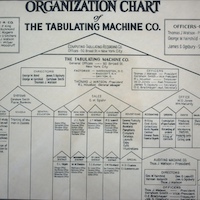
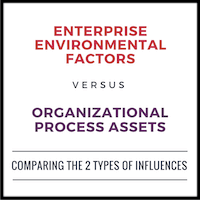
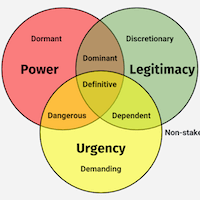
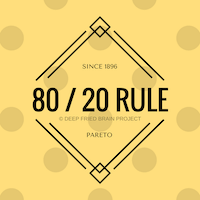
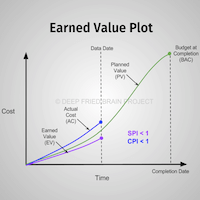









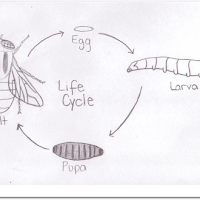









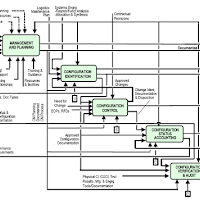

























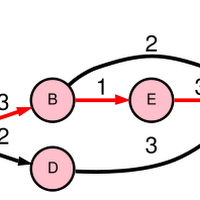


97 Comments
Deepak
Harwinder Singh
Chelluri
Harwinder Singh
Pradeep
Pradeep
Anonymous
Harwinder Singh
Giri
Harwinder Singh
Giri
Giri
Harwinder Singh
Giri
Giri
Harwinder Singh
Harwinder Singh
Giri
Harwinder Singh
Anonymous
Harwinder Singh
Anonymous
Mark
Harwinder Singh
Giri
Giri
Harwinder Singh
Vanina
Harwinder Singh
Anonymous
Anonymous
Harwinder Singh
Anonymous
Harwinder Singh
Anonymous
Harwinder Singh
Anonymous
Anonymous
Roberto
Harwinder Singh
Anonymous
Harwinder Singh
Malli
Harwinder Singh
Sir Chawlz
Harwinder Singh
Gopi
In
Anonymous
Sir Chawlz
Anonymous
Harwinder Singh
Anonymous
Harwinder Singh
Anonymous
Anonymous
Harwinder Singh
Anonymous
Harwinder Singh
Anonymous
Harwinder Singh
Harwinder Singh
Rookie
Harwinder Singh
Rookie
Harwinder Singh
Imran
Harwinder Singh
Anonymous
Neha
Gomati
khurram
Harwinder Singh
Anonymous
Harwinder Singh
Anonymous
Ramesh
Harwinder Singh
Ramesh
Harwinder Singh
Ramesh
Anonymous
Harwinder Singh
Mohamad
Harwinder Singh
Manish
Harwinder Singh
Manish
PMP2012
Jenn
Anonymous
Harwinder Singh
EZ
Subburayan Umapathi
Naz
Maruthi
Harwinder Singh